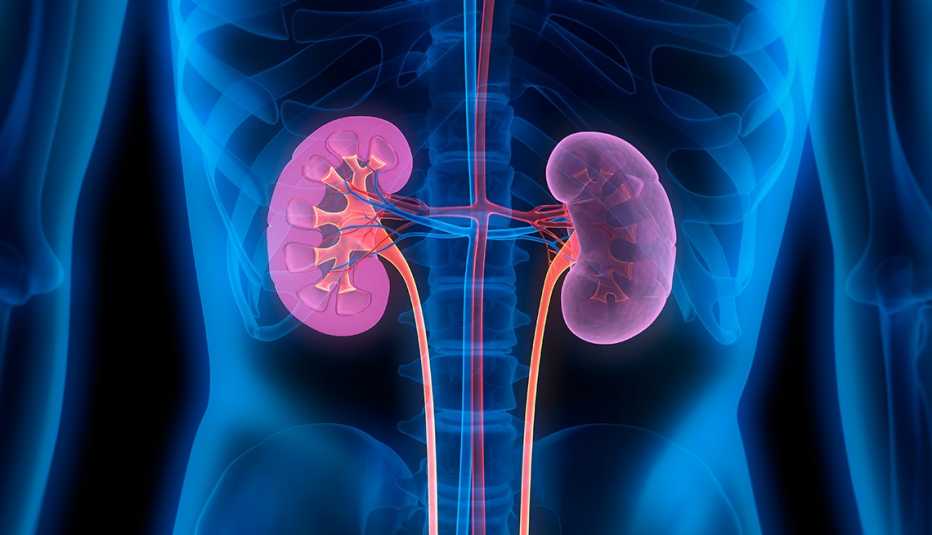Staying Fit


A basic blood or urine test can uncover it. Yet as many as 9 in 10 adults in the United States who have kidney disease don’t know they do. That’s because this sometimes deadly condition is often asymptomatic until quite severe.
"Most people think it involves pain in the kidneys or blood in the urine,” says F. Perry Wilson, M.D., associate professor of medicine at the Yale School of Medicine. In fact, it starts much more subtly.


AARP Membership— $12 for your first year when you sign up for Automatic Renewal
Get instant access to members-only products and hundreds of discounts, a free second membership, and a subscription to AARP the Magazine.
Your body makes the amino acid creatine from the normal wear and tear of your muscles. Normally your kidneys filter excess creatine and other wastes and extra fluid from your body and pass it out in urine. If your kidneys aren’t working properly, the amount of creatine in your blood builds up while the amount of it in your urine goes down. This process can go on for years before noticeable symptoms appear. By the time they do, kidney disease can be deadly.
How to know if you’re at risk
Your age, race, sex and race/ethnicity play a role in whether kidney disease is likely to affect you. Chronic kidney disease, for example, is 38 percent more common in those age 65 and older than in younger people, according to the Centers for Disease Control and Prevention. It’s also only slightly more common in women than men, and slightly more common in Black adults than in white (16 percent to 13 percent, respectively).
You’re also significantly more likely to have kidney disease if you’re a smoker, are obese or have a family history of the condition. As for the greatest risk factors for the disease? Having long-term high blood pressure or diabetes, both of which damage the tiny blood vessels in the kidneys.

































































More on health
Are You Headed Toward Diabetes?
You might have an earlier stage of the disease and not even know it. Here are the risk factors
To Live Longer, Exercise Daily
Even 15 minutes of physical activity each day can have health benefitsVaricose Veins Linked to Blood Clots
Study shows that people with the condition may be at higher risk